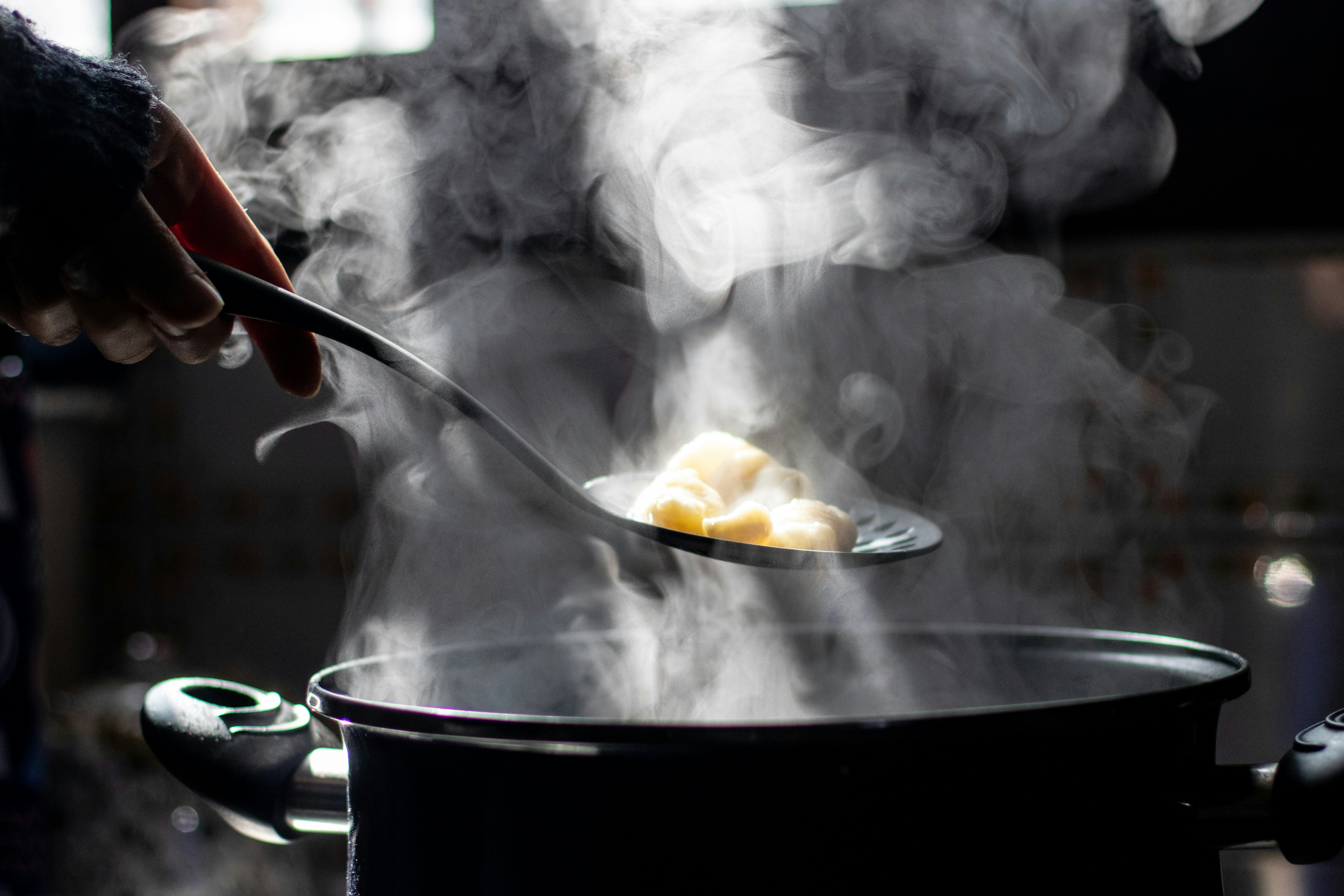Savory Science: Unlock Flavor Pairing Chemistry at Home
Have you ever pondered why certain flavors just seem to sing together while others clash? The answer lies within the fascinating realm of flavor pairing—a science that goes beyond taste and touches on the intricate chemistry behind how we experience food. As home cooks, understanding this savory science can elevate your cooking to new heights, helping you create culinary masterpieces that leave your guests in awe. So grab your apron and curiosity, as we dive into the world of flavor pairing and unearth the hidden chemistry that makes dishes unforgettable.
Understanding Flavor: The Basics

At its core, flavor is a harmonious blend of taste, aroma, and texture. Taste is influenced by our five senses: sweet, sour, bitter, salty, and umami. Aromas can trigger memories, emotions, and even cravings, while texture impacts how we perceive food. When we think about flavor pairing, it's essential to consider how these elements interact with one another.
The Science Behind Flavor Pairing

Flavor pairing is grounded in science—specifically, the chemistry of compounds in ingredients. Certain foods share volatiles, compounds that contribute to their aroma, which creates a natural affinity when paired together. For instance, strawberries and basil work beautifully together because they possess complementary aromatic compounds.
Experimenting with these combinations can lead to surprising results. By understanding the underlying chemistry in flavors, you can create exciting new dishes that surprise and delight your palate.
Classic Flavor Pairings and Their Chemistry

Some flavor combinations have stood the test of time and become staples in culinary practices worldwide. Here are a few classic pairs and what makes them work so well.
Tomato and Basil

Tomato and basil are a match made in culinary heaven. The sweetness of tomatoes lends itself to the herbaceous and slightly peppery notes of basil, while the acidity of the tomato enhances the fresh flavor of the herb. This pairing is not just intuitive; it highlights complementary aromas, evident in classic Italian cuisine, like Caprese salad or marinara sauce.
Garlic and Olive Oil

Garlic’s pungent and savory notes pair excellently with the rich, fruity flavor of olive oil. When heated, garlic becomes milder and sweeter, blending seamlessly with the oil's flavors. This foundational pairing is often used as a base for many dishes and sauces, enriching the overall flavor profile.
Chocolate and Sea Salt

The contrasting flavors of sweet chocolate and savory sea salt create a beautiful balance. The salt enhances the inherent bitterness of chocolate, elevating its complex flavors. This dynamic duo can be seen in gourmet desserts and artisan chocolates, showcasing how salt can enhance sweetness in unexpected ways.
Unconventional Flavor Pairings

While classic combinations have their charm, sometimes the most riveting flavors come from the unexpected. Don't shy away from experimenting with vibrant and unconventional pairings. Here are a few to inspire your culinary adventures.
Strawberry and Balsamic Vinegar
This unconventional pairing surprises the palate with its burst of sweet and tangy notes. The acidity of balsamic vinegar intensifies the sweetness of strawberries, creating a vibrant flavor experience. This combination can be transformed into a delightful dressing for salads or served as a topping for desserts.
Watermelon and Feta
Juicy watermelon and salty feta create an exquisite balance of contrasting flavors. The sweetness of the watermelon complements the creamy, briny texture of the cheese, making it a perfect summer salad component. Add some mint and a squeeze of lime, and you have a refreshing dish that excites the taste buds.
Bacon and Maple Syrup
The smokiness of bacon married with the sweetness of maple syrup makes for a breakfast or brunch delight. This pairing not only tantalizes the taste buds but also satisfies the craving for salty and sweet. You can experiment with this combination in various forms, from pancakes with bacon-infused syrup to sandwich recipes that bridge flavors creatively.
The Role of Aromatics in Flavor
When we discuss flavor, we cannot overlook the pivotal role of aromatics. Aromatic ingredients like herbs, spices, and even certain vegetables can drastically alter the perception of taste. Let’s explore how essential aromatics can enhance your dishes.
Herbs and Spices
Using fresh herbs—notably basil, cilantro, and thyme—can transform dishes into gourmet experiences. Their aromatic properties bring various flavor dimensions, influencing the overall taste and feel of a meal. Think of adding fresh thyme to roasted vegetables or cilantro to spicy salsas; they brighten and elevate dishes remarkably.
Citrus Zest
The zest of citrus fruits like lemons, limes, and oranges packs a punch of fragrant oils that can deeply enhance flavors. Whether you add lemon zest to a buttery sauce or lime zest to salads, it can brighten the overall profile of your dish, leaving a refreshing note that lingers on the palate.
Onions and Garlic
The powerful aromas of onions and garlic boost depth in countless recipes. Whether sautéed to sweetness or caramelized for depth, these aromatics form the backbone of many cuisines. They can be used as a base for sauces, stews, or soups, enhancing flavor through their aromatic compounds.
Experimenting with Flavor Pairing
As a home cook, the ability to experiment with flavor pairings is invaluable. Embrace your inner alchemist by following a few key steps to start creating exciting flavor combinations.
Choose Ingredients with Complementary Aromatics
Begin by selecting a base ingredient—think proteins like chicken or tofu, vegetables like squash or eggplant, or even grains like quinoa or rice. Then, choose tech-match aromatics, spices, and condiments that share aromatic qualities. The key is to balance taste and aroma in harmony.
Play with Textures
Texture can enhance flavor perception. When pairing ingredients, consider how for example crispy shallots can elevate a creamy soup or a crunchy salad. Experimenting with mouthfeel can lead to discovering new pathways of flavor.
Go Seasonal
One way to simplify pairing is working with seasonal ingredients, as they often share complementary qualities. For example, autumn vegetables like squash and apples naturally pair well, with their sweetness balancing each other out in various forms, such as soups or salads.
Create Flavor Mashups
Take a leap and create unexpected mashups. Think about incorporating flavors from different cuisines—such as a Thai-inspired pasta dish or a Mexican-inspired pizza. Investigate global sources of inspiration through Asian, Mediterranean, or Latin ingredients, adding a fresh twist to your meals.
Elevate Your Cooking with Sound
Believe it or not, sound can also influence flavor. This concept delves into the idea that cooking can be an immersive experience that engages more than just our taste buds.
The Influence of Sound in Cooking
Research suggests that sound can enhance our perception of flavor. For instance, the crunch of an apple is an essential part of why we experience it as fresh and crisp. Consider the ambiance of your cooking environment and how creating an ideal auditory backdrop can enhance meal preparation and enjoyment.
Cooking with Music
Playing music while cooking can elevate your culinary experience. Choose upbeat or calming tunes that enhance your cooking journey, allowing you to experiment and explore freely.
Final Thoughts: Mastering Flavor Pairing at Home
Diving into flavor pairing can be an enriching journey for any home cook. By understanding the chemistry behind flavor, exploring classical and unconventional combinations, and experimenting boldly, you can unlock a whole new world of culinary possibilities. Remember, the art of cooking is also about engaging with your senses, from taste and aroma to texture and sound. Embrace this savory science, and you'll cultivate dishes that not only satisfy hunger but also evoke memories and emotions.
Ready to enhance your culinary skills? Check out elevate your cooking with flavor pairing tips and discover how to transform ingredients into masterpieces.


